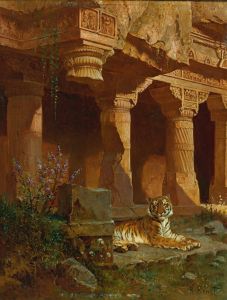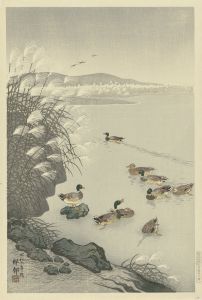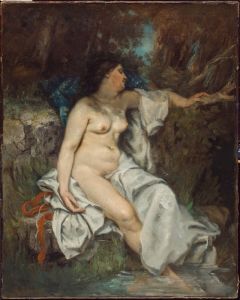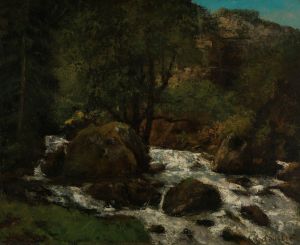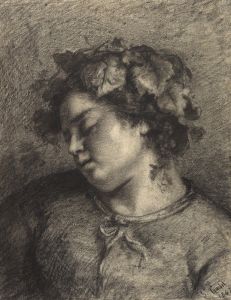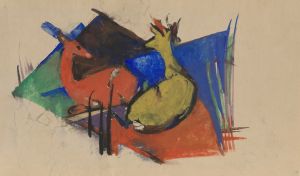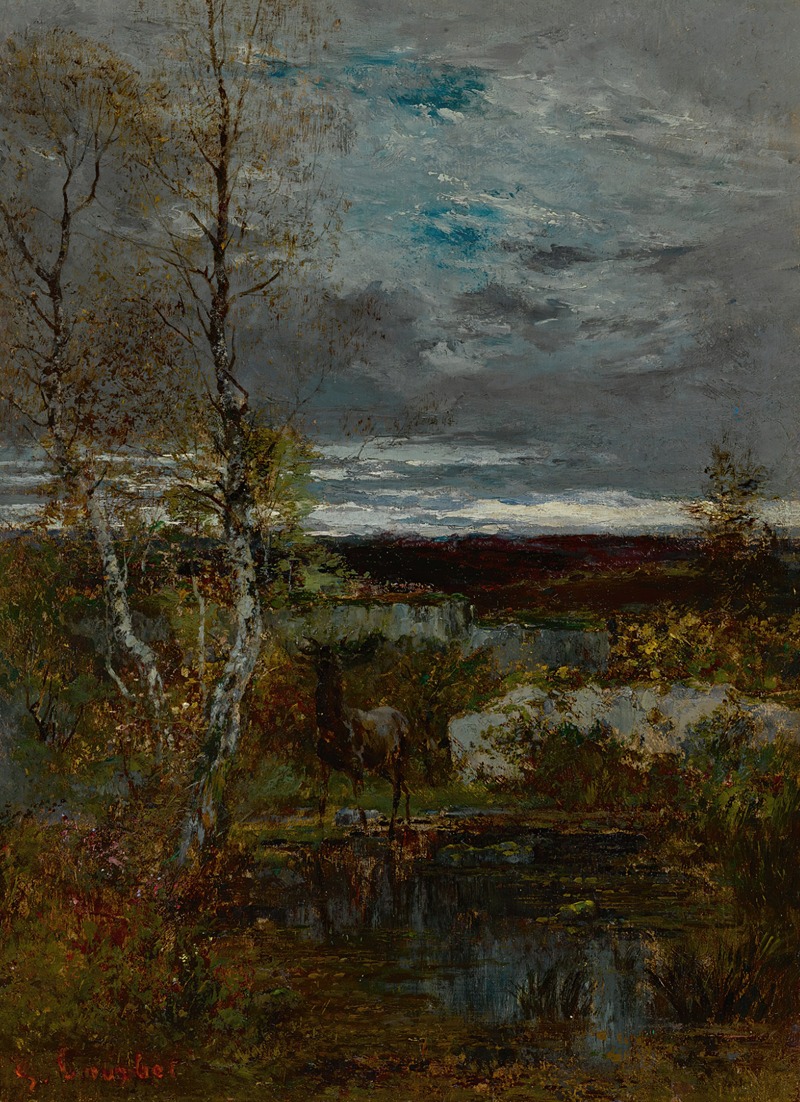
Cerf À La Mare
A hand-painted replica of Gustave Courbet’s masterpiece Cerf À La Mare, meticulously crafted by professional artists to capture the true essence of the original. Each piece is created with museum-quality canvas and rare mineral pigments, carefully painted by experienced artists with delicate brushstrokes and rich, layered colors to perfectly recreate the texture of the original artwork. Unlike machine-printed reproductions, this hand-painted version brings the painting to life, infused with the artist’s emotions and skill in every stroke. Whether for personal collection or home decoration, it instantly elevates the artistic atmosphere of any space.
Gustave Courbet, a leading figure in the Realist movement of 19th-century French painting, is renowned for his commitment to depicting everyday life and nature with unembellished accuracy. One of his works, "Cerf À La Mare" (Stag at the Pool), exemplifies his dedication to realism and his fascination with the natural world.
Courbet was born in 1819 in Ornans, a small town in the Franche-Comté region of France. His rural upbringing profoundly influenced his artistic vision, as he often drew inspiration from the landscapes and wildlife of his native region. Throughout his career, Courbet sought to challenge the conventions of academic art, which often idealized subjects, by presenting them in a more authentic and unidealized manner.
"Stag at the Pool" is a testament to Courbet's skill in capturing the essence of nature. The painting depicts a stag standing by a pool of water, surrounded by a lush, verdant landscape. Courbet's use of earthy tones and his attention to detail in rendering the stag's fur and the surrounding foliage reflect his commitment to realism. The composition is both tranquil and dynamic, as the stag appears alert, possibly sensing an unseen presence or disturbance in its environment.
Courbet's technique in this painting is characterized by his use of a palette knife, a tool he favored for its ability to create texture and depth. This method allowed him to apply paint thickly, giving the surface of the painting a tactile quality that enhances the realism of the scene. The play of light and shadow in the painting further adds to the lifelike representation of the stag and its surroundings.
The painting also reflects Courbet's interest in the theme of solitude and the natural world. The solitary stag, isolated in its natural habitat, can be seen as a metaphor for the artist himself, who often felt at odds with the mainstream art establishment of his time. Courbet's choice to focus on a single animal in a serene setting underscores his belief in the power of nature as a subject worthy of artistic exploration.
"Stag at the Pool" is part of a broader body of work in which Courbet explored the theme of animals in nature. His animal paintings are noted for their directness and lack of sentimentality, qualities that set them apart from the more romanticized depictions of wildlife by some of his contemporaries. Courbet's approach to painting animals was consistent with his overall artistic philosophy, which emphasized observation and the truthful representation of the world.
Throughout his career, Courbet faced both acclaim and controversy. His realist approach was revolutionary at the time, challenging the dominant academic standards and paving the way for future generations of artists. Despite facing criticism from some quarters, Courbet remained steadfast in his artistic convictions, leaving a lasting impact on the art world.
In summary, "Cerf À La Mare" is a quintessential example of Gustave Courbet's realist style and his deep connection to nature. The painting captures the beauty and complexity of the natural world with a level of detail and authenticity that was groundbreaking for its time. Through works like this, Courbet not only contributed to the evolution of modern art but also offered viewers a new way of seeing and appreciating the world around them.





